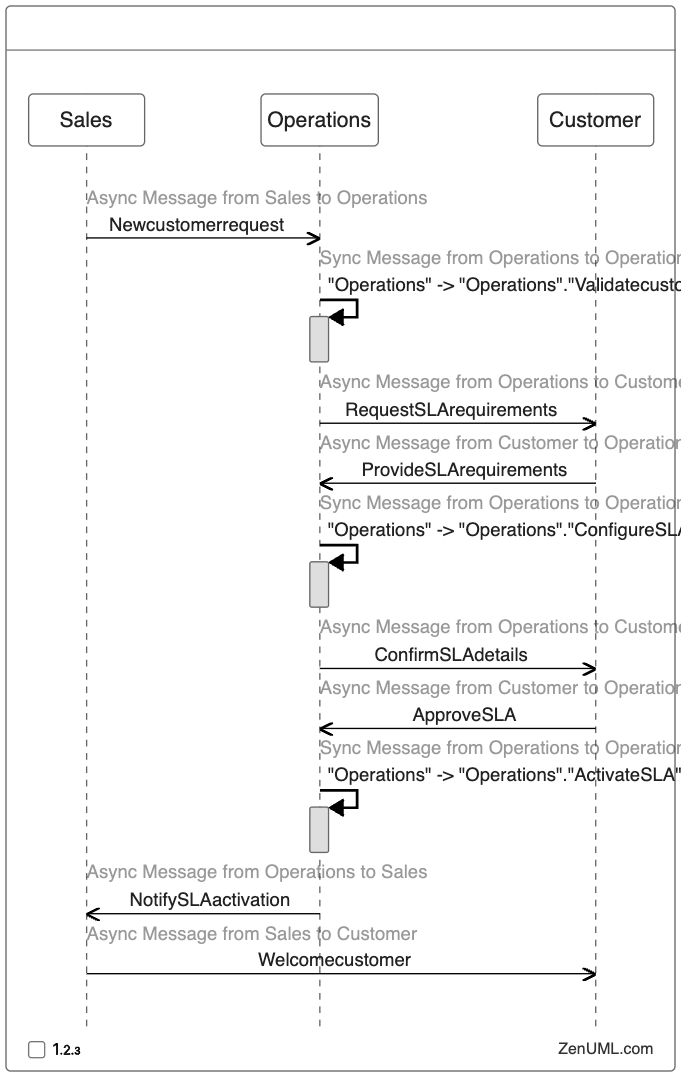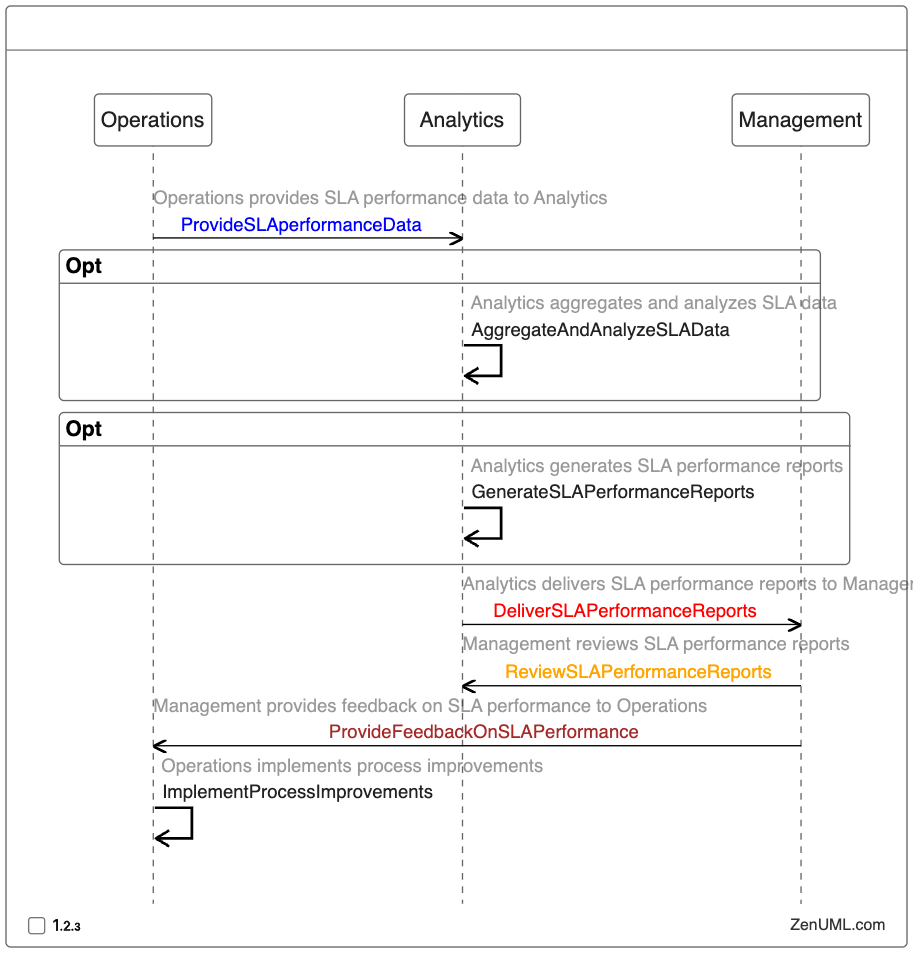Introduction
In the fast-paced business landscape, effective Service Level Agreement (SLA) management has become a critical component for organizations to ensure their service delivery meets the expectations of their clients. SLAs are contractual agreements that define the level of service, performance metrics, and responsibilities between a service provider and a customer. Ineffective SLA management can lead to dissatisfied customers, financial penalties, and damaged reputations.
To address these challenges, businesses are increasingly turning to business process modeling (BPM) as a strategic approach to optimize their SLA management practices. BPM is the discipline of documenting, analyzing, and improving the processes that underpin an organization's operations, with the goal of enhancing efficiency, reducing costs, and improving customer satisfaction.
In this blog post, we will explore the benefits of using BPM to manage SLAs, and provide practical examples to illustrate how this approach can be implemented effectively.
The Importance of Effective SLA Management
SLAs are crucial for maintaining strong customer relationships and ensuring the successful delivery of services. According to a study by the International Association of Contract and Commercial Management (IACCM), effective SLA management can lead to a 9% increase in customer retention and a 7.5% increase in revenue growth.
However, many organizations struggle with SLA management due to a variety of factors, including:
- Complexity: SLAs can be complex, with multiple metrics, thresholds, and escalation procedures that must be carefully tracked and managed.
- Lack of Visibility: Organizations often lack visibility into the performance of their SLAs, making it difficult to identify and address issues in a timely manner.
- Manual Processes: Many SLA management processes are still heavily reliant on manual, error-prone methods, such as spreadsheets and email.
- Siloed Departments: SLA management often involves multiple departments, such as sales, operations, and customer service, which can lead to communication breakdowns and inconsistent processes.
To overcome these challenges, businesses are turning to BPM as a way to streamline and optimize their SLA management practices.
Leveraging Business Process Modeling for SLA Management
Business process modeling provides a structured approach to documenting, analyzing, and improving the processes that underpin an organization's SLA management practices. By taking a holistic view of the SLA lifecycle, businesses can identify and address pain points, streamline workflows, and improve collaboration across departments.
Here are some key benefits of using BPM for SLA management:
1. Improved Visibility and Transparency
BPM can help organizations achieve greater visibility into their SLA performance by creating a centralized, documented view of the processes and workflows involved. This can include:
- Mapping out the key steps and decision points in the SLA lifecycle, from negotiation to monitoring and reporting.
- Identifying the roles and responsibilities of different departments and individuals involved in SLA management.
- Visualizing the flow of information and the handoffs between different teams.
By documenting these processes, businesses can gain a better understanding of their SLA management practices and identify areas for improvement.
2. Streamlined Workflows and Automation
BPM can also help organizations streamline their SLA management workflows and automate certain tasks, reducing the manual effort required and minimizing the risk of errors. For example, businesses can use BPM to:
- Automate the generation of SLA reports and alerts based on predefined performance thresholds.
- Streamline the process of onboarding new customers and configuring SLAs.
- Implement automated workflows for escalating and resolving SLA breaches.
By automating these processes, businesses can free up their employees to focus on more strategic tasks, while improving the consistency and reliability of their SLA management practices.
3. Enhanced Collaboration and Communication
SLA management often involves multiple departments, such as sales, operations, and customer service. BPM can help improve collaboration and communication by:
- Providing a shared, documented understanding of the SLA management processes.
- Identifying the key stakeholders and their roles and responsibilities.
- Facilitating the exchange of information and the coordination of actions across different teams.
By improving collaboration and communication, businesses can ensure that everyone involved in SLA management is aligned on the processes, responsibilities, and expected outcomes.
Practical Examples of Business Process Modeling for SLA Management
To illustrate how BPM can be applied to SLA management, let's consider a few practical examples:
Example 1: SLA Onboarding Process
One of the critical processes in SLA management is the onboarding of new customers and the configuration of their SLAs. This process can be documented and optimized using BPM. Here's an example of a sequence diagram that depicts the SLA onboarding process:

This sequence diagram illustrates the key steps involved in the SLA onboarding process, including the handoffs between the sales, operations, and customer teams. By documenting this process, the organization can identify potential bottlenecks, streamline workflows, and ensure consistent SLA configuration across different customers.
Example 2: SLA Breach Management
Another critical process in SLA management is the handling of SLA breaches. This process can also be documented and optimized using BPM. Here's an example of a sequence diagram that depicts the SLA breach management process:

This sequence diagram illustrates the key steps involved in the SLA breach management process, including the detection of the breach, the notification to the customer, the escalation to management, the root cause analysis, and the implementation of the remediation plan. By documenting this process, the organization can ensure a consistent and effective approach to handling SLA breaches, which can help to maintain customer trust and avoid financial penalties.
Example 3: SLA Reporting and Analytics
Effective SLA management also requires robust reporting and analytics capabilities. BPM can be used to document and optimize the processes involved in generating and analyzing SLA performance reports. Here's an example of a sequence diagram that depicts the SLA reporting and analytics process:

This sequence diagram illustrates the key steps involved in the SLA reporting and analytics process, including the collection of performance data, the generation of reports, and the review and feedback from management. By documenting this process, the organization can ensure that SLA performance data is consistently and accurately captured, analyzed, and used to drive continuous improvement.
Conclusion
Effective SLA management is crucial for maintaining strong customer relationships and ensuring the successful delivery of services. By leveraging business process modeling, organizations can optimize their SLA management practices, improve visibility and transparency, streamline workflows, and enhance collaboration and communication.
As demonstrated in the practical examples above, BPM can be applied to various aspects of SLA management, from onboarding and breach management to reporting and analytics. By documenting and optimizing these processes, businesses can improve the consistency and reliability of their SLA management practices, leading to better customer satisfaction, financial performance, and overall organizational success.
We encourage you to explore the benefits of business process modeling for your own SLA management practices. By taking a structured, data-driven approach to SLA management, you can unlock new opportunities for growth and innovation in your business.
We'd love to hear your thoughts and experiences in the comments below. How have you leveraged BPM to improve your SLA management practices? What challenges have you faced, and how have you overcome them?
Try ZenUML now!
Zenuml detailed feature roadmap available here.

